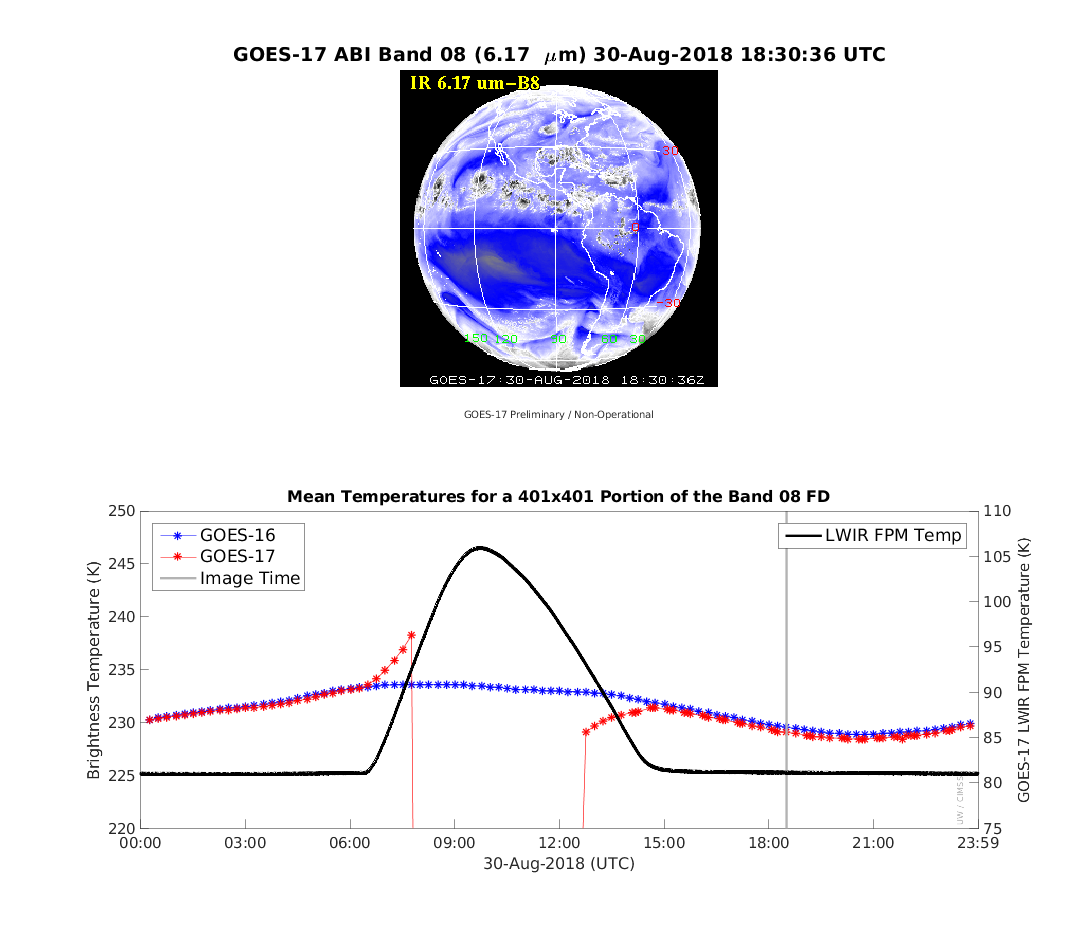
[ Archive ]

 |
CIMSS-NOAA Weekly Report [ Archive ] |
 |
ASPB AND CIMSS WEEKLY HIGHLIGHTS FOR THE WEEK ENDING SEPTEMBER 28, 2018
IN THE PRESS:
ITEMS FOR THE ADMINISTRATOR:
ITEMS FOR THE ASSISTANT ADMINISTRATOR:
ITEMS FOR THE OFFICE DIRECTOR, STAR:
CDR for GOES-16 ASR: The Critical Design Review (CDR) was held for the GOES-16 All-Sky Radiance (ASR) Project this week. ASR provides spatially thinned brightness temperature statistics for clear and cloudy pixels for use in data assimilation schemes by numerical weather prediction INWP) centers. The Cooperative Institute for Meteorological Satellite Studies (CIMSS) has developed and optimized the design of ASR based on feedback from NWP centers. The GOES-16 ASR is already being used operationally by the European Centre for Medium-Range Weather Forecasts (ECMWF). The GOES-16 ASR is therefore a critical application of the GOES-16 cloud and radiances products. (A. Heidinger, E/RA2, 608-263-6757, andrew.heidinger@noaa.gov, J. Jung, jim.jung@ssec.wisc.edu, S. Nebuda, sharon.nebuda@ssec.wisc.edu)
CIMSS Reports on GOES-17 ABI Data Quality: Researchers at the Cooperative Institute for Meteorological Satellite Studies (CIMSS) continue to report on Geostationary Operational Environmental Satellite (GOES)-17 Advanced Baseline Imager (ABI) data quality issues to the GOES-R Algorithm Working Group (AWG), the Calibration Working Group (CWG), and the GOES-17 Science Options Team. These teams are working to better understand and mitigate the effects of the GOES-17 loop heat pipe issue in terms of the effect on data quality and Level 2 products. CIMSS produces plots comparing GOES-16 to GOES-17 brightness temperatures along with the GOES-17 focal plane module temperature and imagery to help users understand the effects of the instrument's warming on data quality: http://cimss.ssec.wisc.edu/goes/blog/wp-content/uploads/2018/09/GOES17_FPMTemp_GOES16vsGOES17_FD_2018242_Band15.mp4. (M. Gunshor, CIMSS, matg@ssec.wisc.edu, T. Schmit, E/RA2, 608-263-0291, tim.j.schmit@noaa.gov)
 (Click image to enlarge)
(Click image to enlarge)
Figure caption: GOES-17 ABI Band 08 (6.17um) on 30 Aug 2018 at 18:30:36, including mean brightness temperatures for GOES-16 and GOES-17, along with the Focal Plane Module (FPM) temperature for GOES-17, for the entire day. August 30 is the "worst" day for instrument heating.
ITEMS FOR THE DIVISION CHIEF, CoRP:
GOES Presentations to the Satellite Aerosol Product Workshop: Tim Schmit and Chris Schmidt gave remote presentations to the 2018 NOAA Satellite Aerosol Product Workshop. The titles were "Update on the GOES-17 ABI (Advanced Baseline Imager)" and "ABI Fire Products", respectively. This workshop was hosted by Shobha Kondragunta and Amy Huff. More information is available at https://www.star.nesdis.noaa.gov/star/meeting_2018NSAP.php. (T. Schmit, E/RA2, 608-263-0291, tim.j.schmit@noaa.gov, C. Schmidt, CIMSS, 608-262-7973, chris.schmidt@ssec.wisc.edu)
GOES-17 information on the CIMSS Satellite Blog: NOAA/NESDIS released its plans to shift GOES-17 from its current test position at 89.5 degrees West longitude to the operational location at 137 degrees West. A CIMSS satellite blog post (https://cimss.ssec.wisc.edu/goes/blog/archives/29874) detailed the move, and also addressed the ongoing work on the Loop Heat Pipe malfunction that affects Advanced Baseline Imager (ABI) data negatively around local satellite midnight just before and after Eclipse season. (S. Lindstrom, CIMSS, 608 263 4425; M. Gunshor, CIMSS, 608 263 1146; T. Schmit NOAA/ASPB, 608 263 0291)
VISITORS:
NEXT WEEK:
LOOKING AHEAD:
| Archived Weeklies Page | Submit a report item |